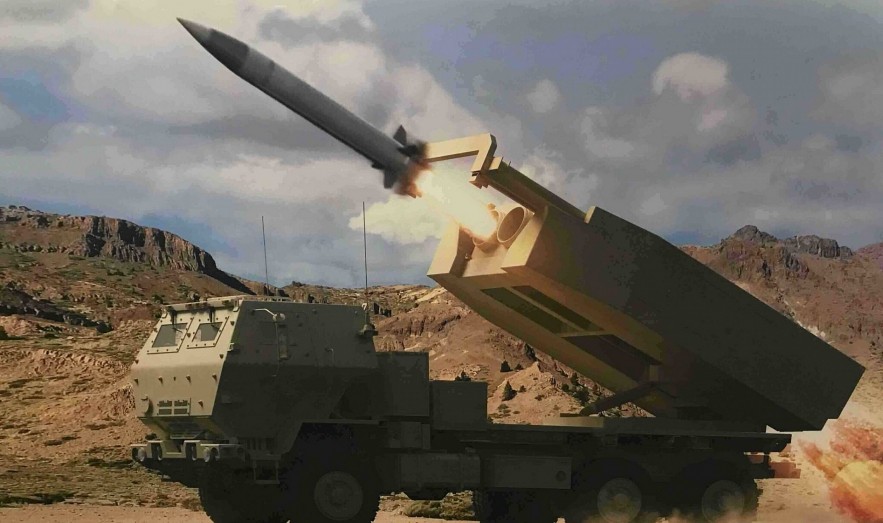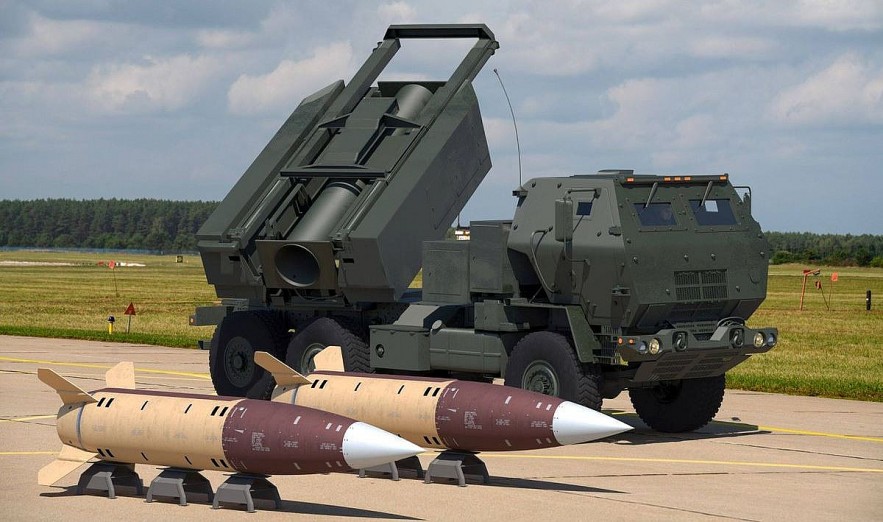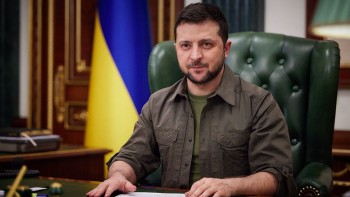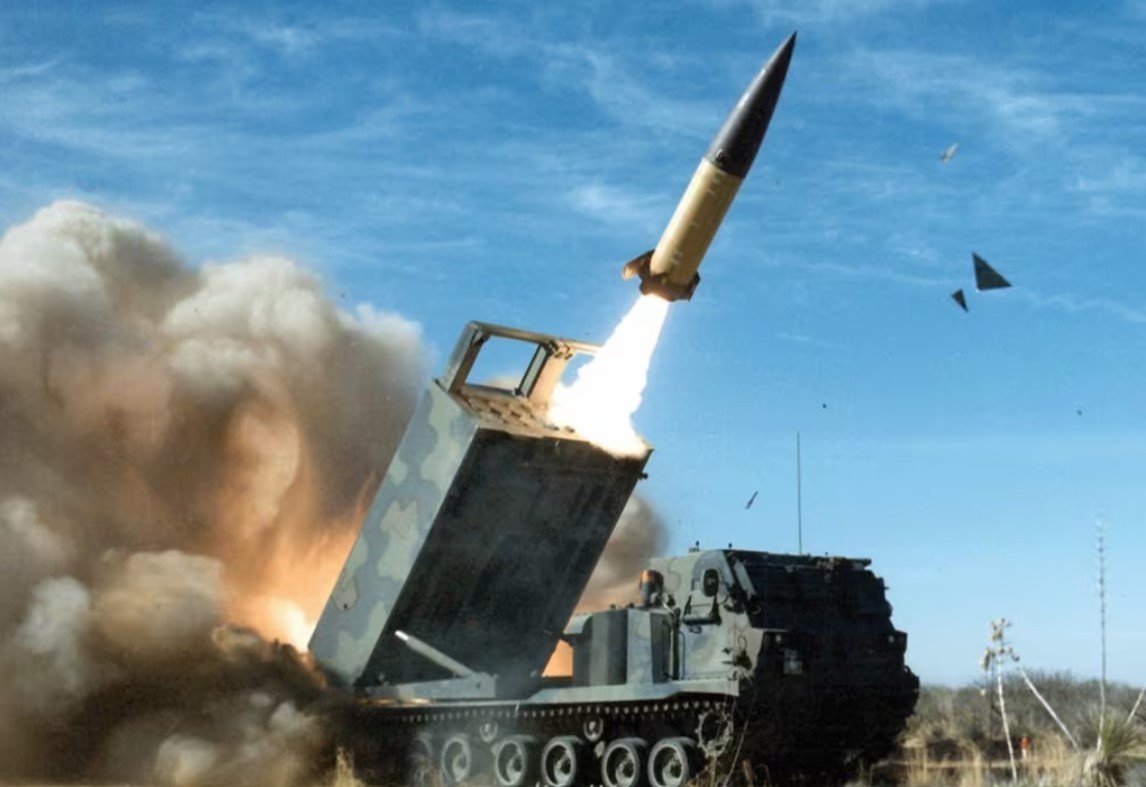What is ATACMS? The Long-Range U.S. Missile Empowering Ukraine Against Russia
 2025 Ukraine Calendar - Public & Regional Holidays: Significance And Celebrations 2025 Ukraine Calendar - Public & Regional Holidays: Significance And Celebrations |
 Who Is Tucker Carlson, Potential Ukraine Peace Envoy - Early Life, Family, Career and More Who Is Tucker Carlson, Potential Ukraine Peace Envoy - Early Life, Family, Career and More |
Biden Allows Ukraine to Strike Russia With Long-Range U.S. Missiles - ATACMS
According to U.S. officials, President Biden has approved Ukraine's first use of long-range missiles provided by the United States for strikes inside Russia.
According to the officials, the weapons will probably be used first against North Korean and Russian forces defending Ukrainian forces in the Kursk region of western Russia.
The decision made by Mr. Biden represents a significant shift in U.S. policy. His decision has caused division among his advisors, and he made the change two months before Donald J. Trump, who has pledged to restrict additional aid for Ukraine, takes office.
The long-range missiles, called the Army Tactical Missile Systems, or ATACMS, were made available to the Ukrainians in reaction to Russia's unexpected decision to include North Korean forces in the conflict.
Learn more: The Threat of World War Three from Ukraine’s Use of Long-Range Missiles
 |
| Long-range ATACMS |
Understanding ATACMS
ATACMS is a family of tactical ballistic missiles developed by Lockheed Martin for the U.S. military. It is designed for precision strikes at long ranges, targeting enemy assets well beyond the reach of conventional artillery.
Key Features of ATACMS:
- Range: Up to 190 miles (300 km), depending on the model.
- Warheads: Equipped with either unitary warheads (for single, concentrated explosions) or cluster munitions (to target large areas or troop formations).
- Launch Platform: Fired from HIMARS (High Mobility Artillery Rocket System) or M270 MLRS (Multiple Launch Rocket System).
- Speed and Accuracy: Travels at speeds exceeding Mach 3, guided by GPS for pinpoint precision.
ATACMS in the Ukraine-Russia War
Since the start of Russia’s invasion in February 2022, Ukraine has sought advanced weaponry to counter Moscow’s superior firepower. The introduction of ATACMS is a significant addition to Ukraine’s arsenal, providing the ability to strike strategic targets far behind enemy lines.
Why ATACMS Is a Game-Changer for Ukraine
Extended Battlefield Reach: ATACMS allows Ukraine to attack critical Russian logistics hubs, command centers, and ammunition depots located far from the frontlines.
Targeting Russian Aviation: In its first reported use, Ukraine struck a military airfield in Luhansk, destroying multiple helicopters and disrupting Russian air operations in the region.
Disrupting Supply Chains: Strikes on key infrastructure like railways and supply depots hinder Russia’s ability to sustain its forces.
Psychological Impact: The ability to strike deep into Russian-controlled territory boosts Ukrainian morale while undermining Russian confidence.
How Many ATACMS Missiles Does Ukraine Have?
Reports suggest that the U.S. secretly transferred over 100 ATACMS missiles to Ukraine as of February 2024. However, the exact number of missiles currently available in Ukraine’s arsenal remains classified for operational security. This secrecy ensures that Russia cannot anticipate Ukraine's strike capabilities or deplete their supply in advance.
Russia’s Vulnerabilities to ATACMS Strikes
The introduction of ATACMS exposes several weaknesses in Russia’s military strategy:
Logistical Overstretch: Russia relies heavily on large supply depots and logistical hubs near the frontlines. ATACMS can target these locations, creating bottlenecks in supplies of ammunition, fuel, and reinforcements.
Limited Defense Capabilities: Russia’s air defenses, while advanced, are not fully optimized to counter high-speed ballistic missiles like ATACMS, particularly when strikes occur in rapid salvos.
Hardened Targets at Risk: Russian command posts, airfields, and fortified ammunition bunkers, previously considered safe due to their distance, are now vulnerable.
Russia’s Air Defense Systems: Can They Stop ATACMS?
Russia has an array of air defense systems, but their ability to counter ATACMS effectively is debatable.
Key Systems and Their Capabilities:
-
S-400 “Triumf”:
- A long-range air defense system capable of intercepting some ballistic missiles.
- However, its effectiveness diminishes against high-speed missiles like ATACMS that follow unpredictable flight paths.
-
Pantsir-S1:
- Designed for short-range defense against drones, aircraft, and some missiles.
- Its limited range and slower response time make it less effective against ATACMS.
-
Buk-M3:
- Medium-range system with upgraded radar and missile technology.
- While capable of intercepting some tactical ballistic missiles, it struggles against ATACMS’ speed and precision.
-
S-300 Systems:
- Older systems still in use, but less effective against modern, high-speed threats.
-
Future Systems (S-500):
- Russia’s next-generation air defense system, still in limited deployment, may eventually provide more robust protection but is unlikely to be widely available in the near term.
Challenges for Russia:
- Speed and Trajectory: ATACMS travels at over Mach 3 and follows a steep, challenging trajectory.
- Overwhelming Strikes: Coordinated salvos of ATACMS can overwhelm even advanced air defense systems.
- Decoy Strategies: Ukraine may deploy electronic countermeasures to confuse Russian defenses.
 Top 8 Limitations of ATACMS and Combat History Top 8 Limitations of ATACMS and Combat History This article explores the technical capabilities, operational strengths, operational weaknesses, and US military history of the ATACMS. |
Geopolitical Implications
The Biden administration’s decision to provide ATACMS carries significant strategic and diplomatic implications:
Strengthening Ukraine’s Position: By enabling Ukraine to disrupt Russian operations deep within occupied territory, ATACMS strengthens Kyiv’s leverage both militarily and diplomatically.
Risks of Escalation: Russia has condemned the provision of ATACMS as a “provocation.” Moscow could retaliate with intensified attacks on Ukrainian cities or infrastructure.
Signaling NATO Unity: The move underscores U.S. commitment to supporting Ukraine, encouraging other NATO allies to provide advanced weaponry.
Potential for Further Arms Transfers: The delivery of ATACMS sets a precedent for future transfers of even more advanced systems, such as F-16 fighter jets or additional precision missile platforms.
 |
| ATACMS missiles |
The Path Ahead
As the conflict continues, the role of ATACMS will likely expand. The missiles’ ability to strike high-value targets deep in Russian-occupied areas could prove decisive in shaping the trajectory of the war. However, this capability also raises questions about the potential for further escalation:
- Will Russia adapt its strategies to mitigate the impact of ATACMS?
- Can Ukraine maintain a steady supply of advanced weaponry?
- How will the international community navigate the increasing complexity of the conflict?
FAQs: ATACMS and Its Role in the Conflict
1. What is ATACMS?
ATACMS is a long-range tactical ballistic missile developed by Lockheed Martin, capable of striking targets up to 190 miles (300 km) away with high precision.
2. How many ATACMS missiles does Ukraine have?
Ukraine reportedly received over 100 ATACMS missiles from the U.S., but the exact number in its arsenal remains classified.
3. What targets can ATACMS hit?
ATACMS is designed to destroy high-value targets, including airfields, ammunition depots, supply hubs, and command centers.
4. Can Russia stop ATACMS?
Russia’s air defense systems, such as the S-400 and Pantsir-S1, can intercept some missiles but face challenges due to ATACMS’ speed, trajectory, and precision.
5. What risks does ATACMS pose to Russia?
ATACMS enables Ukraine to strike deep into Russian-controlled territory, disrupting logistics, air power, and troop movements.
6. Could ATACMS escalate the conflict?
Yes, the use of ATACMS risks provoking stronger retaliatory actions from Russia, potentially escalating the conflict.
Conclusion
ATACMS is a strategic game-changer, enabling Ukraine to expand its battlefield reach and strike critical Russian targets with precision. While it provides significant advantages, it also introduces risks of escalation. As Ukraine leverages this capability, the conflict’s outcome will hinge on both sides’ ability to adapt to this new dimension of warfare.
 Who Is Volodymyr Zelenskyy: Biography, Personal Life, Political Career Who Is Volodymyr Zelenskyy: Biography, Personal Life, Political Career Do you know that before entering politics and becoming president in 2019, Zelenskyy was a comedian and a TV star. Who is Volodymyr Zelenskyy? What ... |
 50+ Weirdest & Little-Known Facts About Ukraine 50+ Weirdest & Little-Known Facts About Ukraine Discover the weirdest and most interesting things about Ukraine that is being torn apart by the Russian attack. |
 Does Ukraine Have Nuclear Weapon? Does Ukraine Have Nuclear Weapon? The global community is inquiring as to whether Ukraine possesses nuclear weapons. It was previously a nuclear power; however, it does not possess nuclear weapons ... |


























